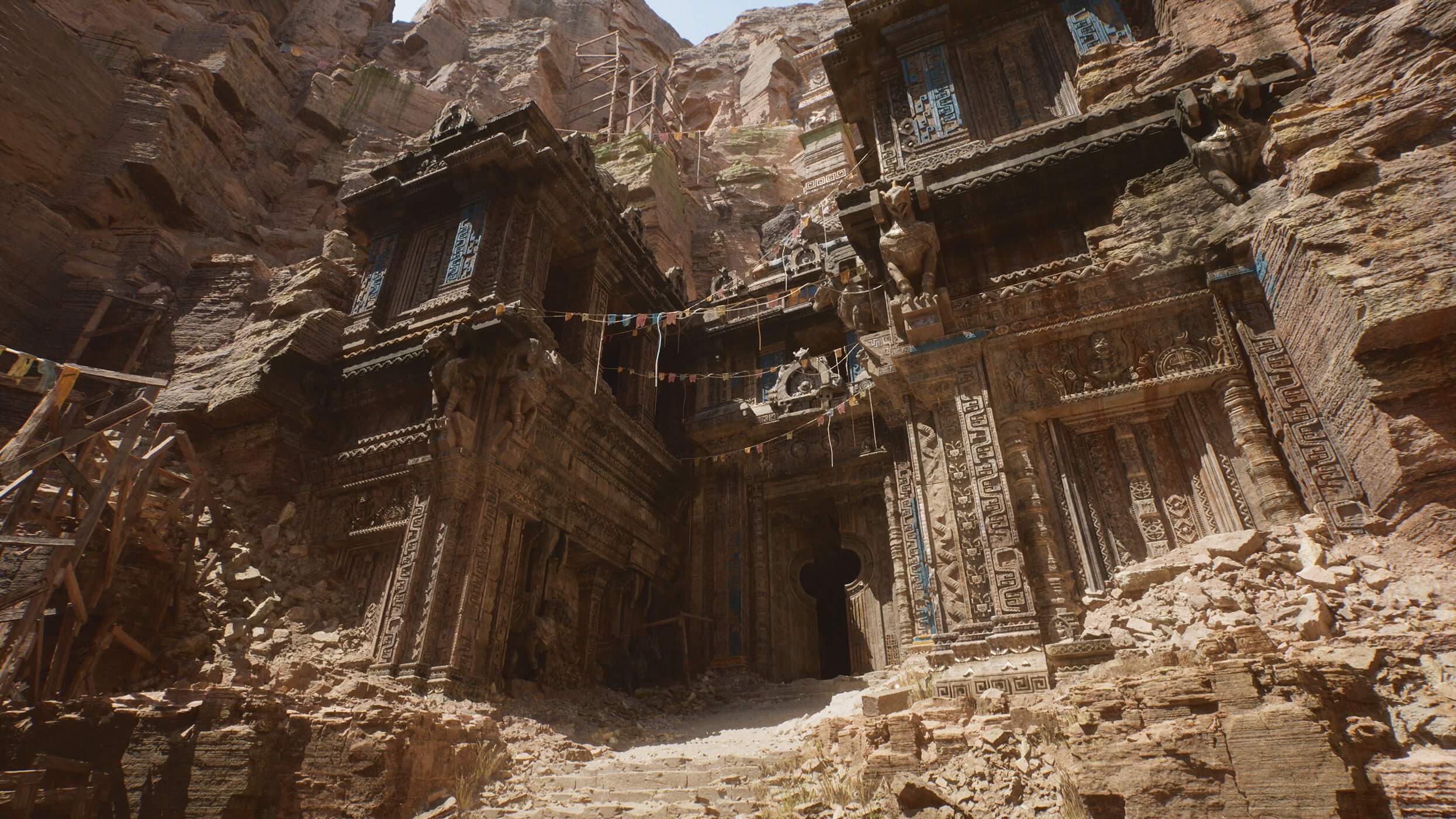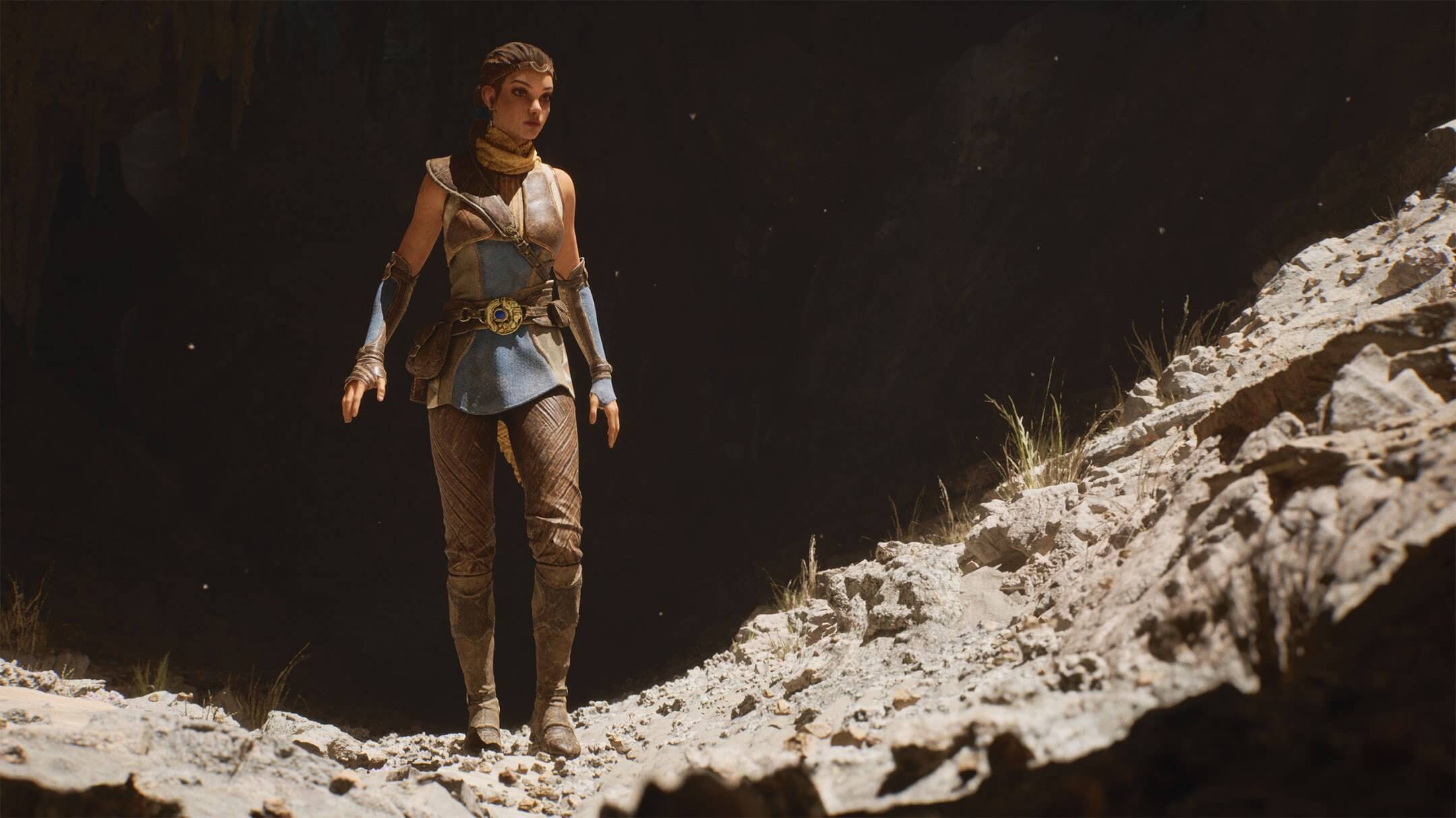Something to look forward to: Microsoft has given us a few early glimpses of games running on the Xbox Series X over the last couple of weeks, but we have not seen much for the PlayStation 5 yet. However, today Epic demonstrated an in-house tech-demo game to showcase Unreal Engine 5 running on the PS5, and it looks pretty stunning.

On Wednesday, Epic Games unveiled Unreal Engine 5, which it says will unleash the power of next-generation machines. To drive the point home, the developers provided a "first look" of the engine running on a PlayStation 5 (below).
Epic's tech demo is called "Lumen in the Land of Nanite," named after two new technologies coming to Unreal Engine — Nanite and Lumen. The Tomb Raideresque real-time game demo highlights how the latest core technologies can bring cinema-level CG to console games with near photorealistic graphical fidelity.
Nanite is a "micropolygon geometry" that Epic claims produces triangles at the size of a pixel. The technology allows developers to use assets in Unreal Engine containing millions or even billions of polygons without hits to performance. It points to a statue within the demo that is comprised of 33 million triangles.
"No baking of normal maps, no authored LODs," the engineers explain.
They then go on to show a room containing 500 of the same statue, each at the same level of detail. That makes for around 16.5 billion triangles in the scene, not including the room geometry — all this, with no discernable lag or frame-rate hits running on a PS5.

Furthermore, developers can easily import these high-poly assets (up to 8K) from whatever tools they use.
"Nanite virtualized geometry means that film-quality source art comprising hundreds of millions or billions of polygons can be imported directly into Unreal Engine—anything from ZBrush sculpts to photogrammetry scans to CAD data—and it just works," said Epic in its press release.
Once the models are imported, Unreal handles all of the streaming and scaling in real-time, so devs don't need to worry about draw or polygon counts, or polygon memory budgets.

The other core technology, Lumen, is a dynamic global illumination (GI) system that reacts in real-time to changes in geometry or lighting source — again with no pre-baking or light maps needed.
"The system renders diffuse interreflection with infinite bounces and indirect specular reflections in huge, detailed environments, at scales ranging from kilometers to millimeters. Artists and designers can create more dynamic scenes using Lumen, for example, changing the sun angle for time of day, turning on a flashlight, or blowing a hole in the ceiling, and indirect lighting will adapt accordingly."
The levels of detail do not have to be contained in small areas either.

"So with Nanite, you have limitless geometry, and with Lumen, you have fully dynamic lighting and global illumination. All running on a PlayStation 5," said Epic's Technical Director of Graphics Brian Karis. "And this doesn't need to be constrained to small rooms. It can stretch all the way to the horizon."
Ninite and Lumen are not the only things Unreal Engine 5 brings to the table. Epic made improvements to existing Unreal technologies, including Chaos physics and destruction, Niagara VFX, convolution reverb, and ambisonics rendering. For example, Niagara particles can now communicate with each other and have a better understanding of their environment. So, developers can create swarms of creatures like bats or bugs that realistically react to their surroundings as well as each other.

Additionally, with the more complex environments that can be created, Epic modified the character animation system to react accurately to the changes. The system dynamically changes the body position to make for more fluid animations such as finding footholds while scaling a cliff or placing a hand on an appropriate edge when squeezing through a door or gap.
As we reported last week, Unreal Engine 4.25 added support for Xbox Series X and PlayStation 5. Epic says there are already "dozens" of studios using UE4 in upcoming next-gen games, but they will have to wait a bit longer to start using the new engine.

Unreal Engine 5 will be ready for early preview in the first part of 2021. Epic expects the full release to be available by late 2021. When ready, UE5 will support all current and next-gen consoles as well as PC, Mac, iOS, and Android. The company also said that developers currently creating next-gen games using UE4 would be able to migrate seamlessly to Unreal Engine 5 upon its release without having to restart production.
Epic also stated that starting today, it is waiving all royalties on the first $1 million in gross revenue developers earn from any project using Unreal Engine. This offer is retroactive to January 1, 2020, so even projects released in the last few months are eligible.
https://www.techspot.com/news/85217-epic-games-gives-us-first-look-unreal-engine.html

